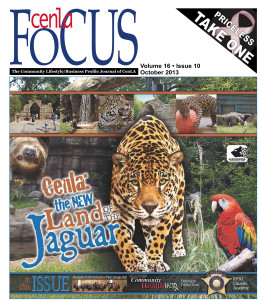
Established in 1926, the Alexandria Zoo (City Park Zoo) has been a part of this community for 87 years. It began as a tiny linear menagerie of cages constructed of chain link fabric and iron bars with gravel, dirt or concrete floors. Over the years, Alexandria Zoo has transformed into an award-winning facility and a recognized participant in the worldwide conservation efforts for endangered species. The Zoo is accredited by the Association of Zoos & Aquariums’ independent Accreditation Commission following a thorough review to ensure it has and will continue to meet ever-rising standards, which include animal care, veterinary programs, conservation, education and safety. AZA requires zoos and aquariums to successfully complete this rigorous accreditation process every five years in order to be members of the Association. Opening the Land of the Jaguar is a giant step forward, as well as an assurance that the City of Alexandria Administration and City Council recognize this jewel in the heart of Bringhurst Park, and are willing to invest in something dear to its citizens and important to education and conservation.
The two jaguars were paired by the Species Survival Plan coordinator and we are hopeful that they will become a breeding pair, contributing to the breeding program for jaguars. Maderas, the female, was born at the San Diego Zoo. In order to introduce new genes into the breeding group in U.S. zoos, the male jaguar was imported from Panama. Bebu, as he is known, was being held at a park after his mother was killed by a poacher when he was only a few months old. His genes will be extremely valuable to jaguar breeding.
Alexandria Zoo continues to follow the Master Plan developed in the 1980’s. The first concept and many of the ideas incorporated into the Land of the Jaguar exhibit were developed by Zoo Designer, Ray Robinson, who worked closely with Lee Ann Whitt. Robinson was a close friend of Les Whitt, and was instrumental in designing the Louisiana Habitat Exhibit. Professional zoo designer and architectural firm Torre Design Consortium, LTD of New Orleans was chosen for final design.
Local contractors, engineers and businesses were hired for construction and engineering specifications. The zoo staff worked diligently with other City of Alexandria employees such as Deputy Director of Public Works Rick Tompkins and Project Manager Jim Ligon. Without the many City of Alexandria departments who came together to contribute their specific skills such as plumbing, electrical, carpentry, painting, welding and ironwork, concrete work, surveying and more, it would have been impossible to finish all elements of the exhibit. Upgrading utilities to this new exhibit was a primary concern not only for daily operations but to make the entire project more energy efficient.
Steve Ayres of Petron, Inc. has always stepped up to the plate to assist the zoo and so many other community entities. The tin fences in the Amazon Village, the old Army truck and crates, the roofs of several enclosures, and one cage are examples of donated labor and materials to help complete projects that did not receive total funding. Board member, Andrea Mattison is also a major contributor who wants to see Land of the Jaguar continue to evolve by helping fund the aviary. Roy O. Martin Foundation and Alexandria Iron and Supply are donors who not only contributed financially but gave materials as needed to complete components of the exhibit.
This new addition to the Zoo was made possible because so many people could see the vision and bought into the idea of creating an incredible environment for animals and families, an outdoor classroom, and an important conservation program. Friends of the Alexandria Zoo, volunteers, community members, businesses, and so many more share our dreams for the future of the Alexandria Zoo. The Land of the Jaguar is funded through a SPARC grant, with additional funding from the City of Alexandria, Friends of the Alexandria Zoo, and private/corporate donors. Donors include the Roy O. Martin Foundation, Bindursky Family, Mr. and Mrs. Jim Flores, Forest Hill Nurseries, Mrs. Caroline G. Theus, and Murphy Oil Company.
Join us! Catch the vision! For more information on all the offerings at your Alexandria Zoo, contact Lee Ann Whitt at (318) 441-6833.